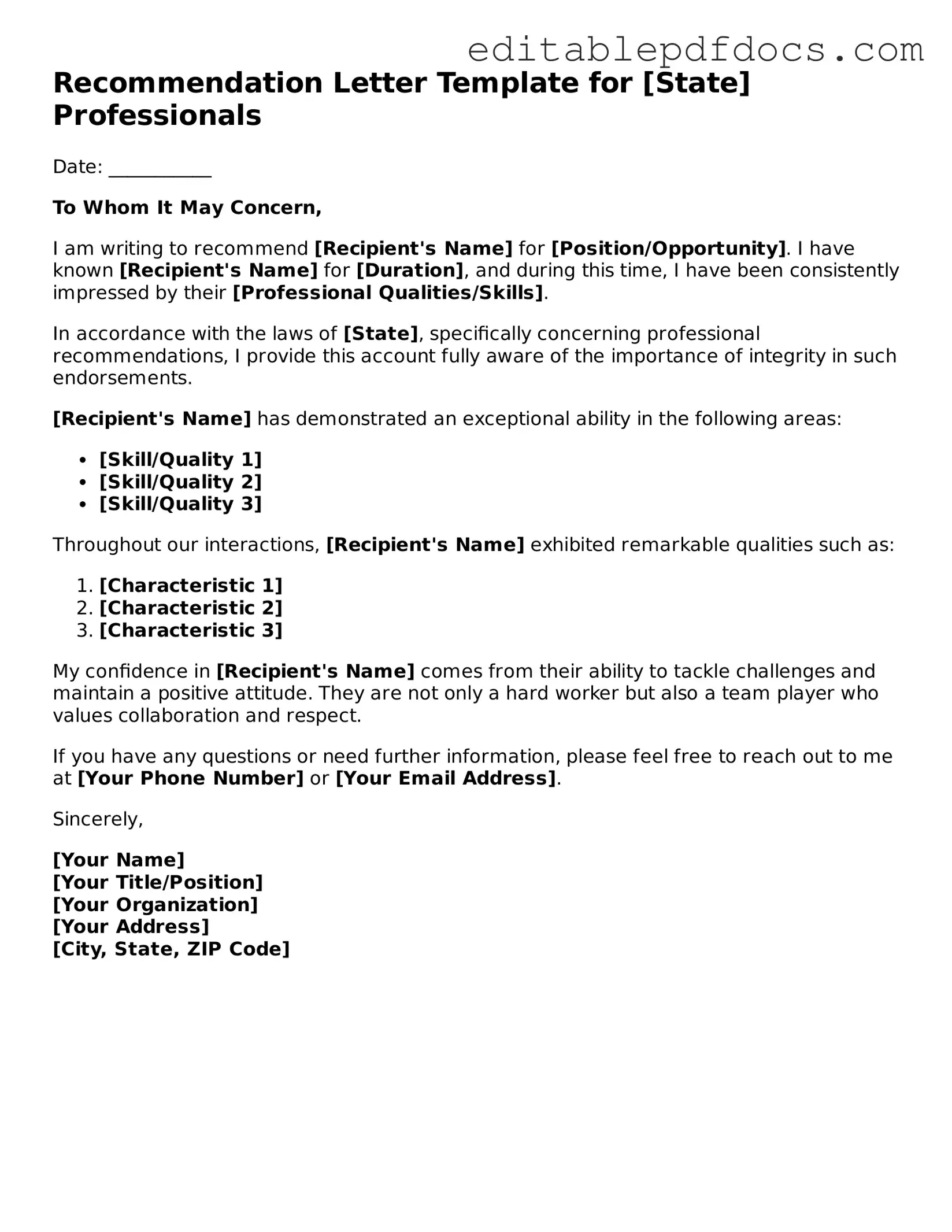A Recommendation Letter form serves as a vital tool for individuals seeking to showcase their qualifications and character through the endorsement of another person. Typically utilized in academic, professional, or personal contexts, this form allows a recommender—often a teacher, employer, or mentor—to articulate their support for the candidate. The form generally includes sections for the recommender's contact information, their relationship to the candidate, and specific examples of the candidate’s skills and achievements. Additionally, it may prompt the recommender to address particular qualities or experiences that make the candidate a suitable choice for a position or opportunity. By providing a structured format, the Recommendation Letter form facilitates clear communication and ensures that all relevant information is included, making it easier for the recipient to assess the candidate's suitability. Ultimately, a well-completed Recommendation Letter can significantly enhance a candidate's application, offering insights that go beyond mere qualifications and highlighting their potential for success.
